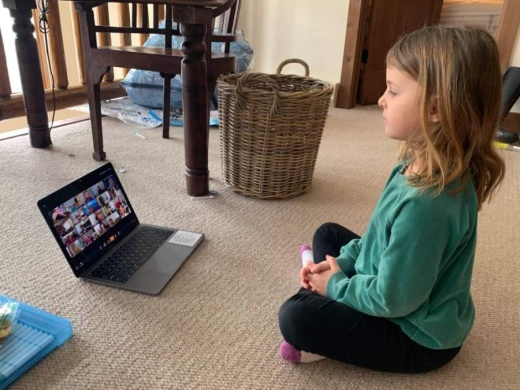Katy Lea has been an educator for seven years, but this is her first time teaching online. Lea, who teaches special education, is doing everything she can to set her students up for success but said the transition to virtual learning has been a challenge.
“It’s a consensus with most of my students and parents that we would all rather be back in school and in the classroom,” Lea said. “It’s definitely a little bit harder to maintain that connection.”
RISD announced March 16 the indefinite closure of schools to combat spread of the novel coronavirus. The announcement lined up with the end of spring break, which was extended by two days to give educators more time to prepare for the shift. By March 25, the district had moved its curriculum to an online platform.
“We had a weeklong training, [as well as] conferences [and] virtual meetings on how we can best serve not only the special education students but the general education students as well,” Lea said.
The ease of transitioning to an online platform has varied based on the age of the child, RISD parent Laura Schob Spradley said.
“If I only had my sixth and eighth graders, this would be like a vacation,” Spradley said. [With] a second grader, I have to be really hands on with her remote learning.”
The lack of in-person guidance is especially difficult for students with learning differences, RISD parent Shelly Catalina said. Assuring her seventh-grade son with attention deficit hyperactivity disorder remains on track has become Catalina’s primary focus.
“[I was] trying to work full time as well as [trying to] keep him on task or even understand what they were asking him to do,” she said.
Catalina was furloughed during the second week of online learning, which afforded her more time to implement changes that would improve her son’s performance.
“All of his grades have really gone up because I think now I'm taking the place of that [teacher’s] aid ... and he's much more open to asking me questions and being vulnerable,” Catalina said.
Alissa Raymond Bennett has five children, four of whom attend school in RISD. Her twin third-grade daughters have dyslexia and struggle with at-home learning because they do not have the same accommodations they have at school.
“They can’t read their assignments on their own,” she said. “There just doesn’t seem to be the adaptations that they would get in a normal classroom.”
Lea believes the biggest challenge for her students is the lack of access to or understanding of technology. The district provided laptops and iPads to students who needed them, Lea said, but students may have trouble using them. This adds an extra burden on parents who have to step in.
“My five-year-old can't necessarily click on hyperlinks and then record himself independently,” Lea said. “Parents definitely have to be a little bit more involved.”
Most educators have been vocal in letting families know they are still as available to help students as they were before. This has been a priority for Lea, she said.
“[I] let them know that I'm still here for them. It's just in a different manner,” Lea said.
Despite the challenging circumstances, Lea said her students are excited to see each other during weekly Zoom meetings
“They are fairly happy,” Lea said. “Some of them don't fully understand the situation of why we're at home, they just know they're home now.”
Many parents say their children enjoy working from home but miss the social aspect of school.
Spradley’s eighth grade daughter, Claire, said she likes having more time to spend on hobbies or be with her family.
“I still feel like I’m learning a lot, but [without] having to go to school eight hours a day,” she said.
Many teachers also have children and families to take care of. For Lea, balancing her roles as a mother and a teacher has been challenging.
“I think the biggest struggle is making sure that I maintain their schoolwork as well as still being a teacher for my students,” Lea said.
As the weeks have progressed, Lea said at-home learning has become easier for everyone. She said she is not concerned with how this could impact student performance since the period following spring break is primarily used for review.
“We are all kind of learning together,” Lea said. “We'll figure it out, and we'll get through it.”





